"Intentions of Murder" is one of the first films of Imamura, filmed in the decade of the '60s (when it was still better known by his former aide prestigious collaborations like Yasujiro Ozu) than is currently recognized, one of the major directors of japanese cinema.
He has spoken often of his humanism and his film is almost a treatise on anthropology and the truth is that there are serious grounds to confirm this. May not exist in your country a filmmaker who has ever devoted so hard to study human nature, from the foundation of it. Imamura is a researcher, a searcher of emotions, an entomologist of people. This huge interest can be summarized in one of its most celebrated: "I am passionate about human beings, almost devoured with passion I feel for them." Although this passion never left him, it is also true that his early works a clearer focus research on the anthropological, from a more detailed account (including a greater length) to its own definition in the title: "Chronicle of Japan Entomological"; "The Pornographers: Introduction to Anthropology" and "Insect Woman", to name a few.
All of the above take more concrete sense, finds its best expression in "Akai Satsui" its misleading title, but this has little to do with a thriller because, above all, this is a new inquiry into human nature , a real drama without melo, without any concessions. And this includes new categories such as the portrait of the working classes more humble and disadvantaged, digging deeper, the world of women, women viewed from a progressive perspective when almost frowned upon to talk about feminism.
This is to include all previous budgets, one of the most genuine movies, more features Imamura film. Her heroine, Sadako, is a woman who, though subject to all their families, kept alive the gene of nonconformity and even rebellion. It is strong and is not intimidated easily, faces and seeks solutions to their problems and bad life.
To make matters worse, the movie, from beginning to end violence, it also contains priceless moments (to highlight two extraordinary sequences in the train, a dream and a real) that are humourous, of terrible blackness, including its final resolution.
Intentions of Murder (Akai satsui, 1964)
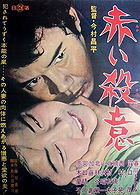 Posted : 13 years, 3 months ago on 15 February 2012 05:02
(A review of Intentions of Murder)
Posted : 13 years, 3 months ago on 15 February 2012 05:02
(A review of Intentions of Murder) 0 comments, Reply to this entry
0 comments, Reply to this entry
The Man from London (2007)
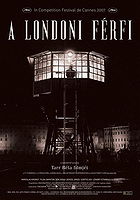 Posted : 13 years, 3 months ago on 13 February 2012 11:28
(A review of The Man from London)
Posted : 13 years, 3 months ago on 13 February 2012 11:28
(A review of The Man from London)In contrast, almost opposed to the most common uses of modern cinematography, which pursues an accumulation, an acceleration in the forms of presentation (speed images in sequence, in the dialogues...) to activate the viewer's attention, Bela Tarr's cinema adds to the current contemplative, slow, flat-sequence, minimalist (though i don't like the expression) in more than one direction, the filmmakers called "cult" as Angelopoulos, Sokurov, Kiarostami, Bartas... The latter is a kind of language hardly supports the indifference or impartiality of the spectator, it can cause so much attraction and rejection, depending on the profile and tastes of the observer.
I having said that and being the first movie see Tarr, i stand at one of the rare "intermediate" in terms of positioning. It is clear from the opening sequence of "The Man from London" or the film hooks you or bores you to death, but his style is not indifferent. It also seems true that exerts a strange kind of fascination, even hypnotic trance, dragging, pushing to keep looking even when nothing seems to happen not in action and that all of it is displayed in real time. But his images are so be careful the slight camera movements, as well accompanied loudly that make force the viewer to appreciate that behind there is a very elaborate form of expression, genuine, and as personal as only the great authors offer.
The protagonist, Maloin is a simple and naive man, with a life very tight, even claustrophobic in a small town where nothing ever seems to happen. It has been used to not think, not feel, not excited, no doubt, and not (want to) know. Until one night in his job as a switchman at a seaside railway station, witnesses a tragic fact that suddenly break your daily routine.
In this free adaptation of the novel "L'homme de Londres" the Belgian writer Georges Simenon, Tarr shows his concern for human alienation, the impaired ability of critical analysis and the annihilation of the initiative and eagerness to learn and understand at the hands of a materialism as surreptitious as wild. For him, contemporary society made a bleak picture which has moved from passive accommodating to loss of consciousness of what is the essence of being human. Everything is very well reflected in their relations to different people, moreover, take a few physical spaces, which reveals the will of the maker of immersing them in a kind of impasse, in a distressing monotony of existence.
Tarr said this film has been more difficult to carry out a production that lasted for over two years, burdened by a long hiatus due to suicide in February 2005, the French producer Humbert Balsan, who the film is dedicated. Even at this point, this is cinema-cinema, look where you want to deal with the just reserves and without fear.
I having said that and being the first movie see Tarr, i stand at one of the rare "intermediate" in terms of positioning. It is clear from the opening sequence of "The Man from London" or the film hooks you or bores you to death, but his style is not indifferent. It also seems true that exerts a strange kind of fascination, even hypnotic trance, dragging, pushing to keep looking even when nothing seems to happen not in action and that all of it is displayed in real time. But his images are so be careful the slight camera movements, as well accompanied loudly that make force the viewer to appreciate that behind there is a very elaborate form of expression, genuine, and as personal as only the great authors offer.
The protagonist, Maloin is a simple and naive man, with a life very tight, even claustrophobic in a small town where nothing ever seems to happen. It has been used to not think, not feel, not excited, no doubt, and not (want to) know. Until one night in his job as a switchman at a seaside railway station, witnesses a tragic fact that suddenly break your daily routine.
In this free adaptation of the novel "L'homme de Londres" the Belgian writer Georges Simenon, Tarr shows his concern for human alienation, the impaired ability of critical analysis and the annihilation of the initiative and eagerness to learn and understand at the hands of a materialism as surreptitious as wild. For him, contemporary society made a bleak picture which has moved from passive accommodating to loss of consciousness of what is the essence of being human. Everything is very well reflected in their relations to different people, moreover, take a few physical spaces, which reveals the will of the maker of immersing them in a kind of impasse, in a distressing monotony of existence.
Tarr said this film has been more difficult to carry out a production that lasted for over two years, burdened by a long hiatus due to suicide in February 2005, the French producer Humbert Balsan, who the film is dedicated. Even at this point, this is cinema-cinema, look where you want to deal with the just reserves and without fear.
 0 comments, Reply to this entry
0 comments, Reply to this entry
Dr. Jekyll and Mr. Hyde (1920)
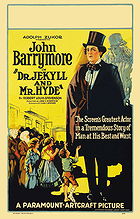 Posted : 13 years, 3 months ago on 12 February 2012 03:13
(A review of Dr. Jekyll and Mr. Hyde)
Posted : 13 years, 3 months ago on 12 February 2012 03:13
(A review of Dr. Jekyll and Mr. Hyde)Before there were some short films on the history of the doctor with a split personality, but this is the first feature film history adapting Stevenson's classic novel.
To the distant date it was shot, the merits of the movie are quite remarkable. To highlight the great performance in both roles, medical and alter ego, John Barrymore. Lon Chaney's contemporary, the characterization of American actor as Mr. Hyde is perhaps the most shocking, the most malignant of how many have been made. If most conform to the simian version of the original, Barrymore has a being closer to the diabolical, with all its features (including the head) so pointed, almost sharp. This is without doubt one of the greatest achievements of movie.
Despite the continuous and monotonous accompaniment of violin music and the story is told with some awkwardness, without sufficient inclusion of spoilers, it will highlight a risky, innovative for its time, in presenting unusual environments such as den opium or brothel, places with an atmosphere, an atmosphere very well developed.
To the distant date it was shot, the merits of the movie are quite remarkable. To highlight the great performance in both roles, medical and alter ego, John Barrymore. Lon Chaney's contemporary, the characterization of American actor as Mr. Hyde is perhaps the most shocking, the most malignant of how many have been made. If most conform to the simian version of the original, Barrymore has a being closer to the diabolical, with all its features (including the head) so pointed, almost sharp. This is without doubt one of the greatest achievements of movie.
Despite the continuous and monotonous accompaniment of violin music and the story is told with some awkwardness, without sufficient inclusion of spoilers, it will highlight a risky, innovative for its time, in presenting unusual environments such as den opium or brothel, places with an atmosphere, an atmosphere very well developed.
 0 comments, Reply to this entry
0 comments, Reply to this entry
Dr. Jekyll and Mr. Hyde (1913)
 Posted : 13 years, 3 months ago on 12 February 2012 01:19
(A review of Dr. Jekyll and Mr. Hyde (1913))
Posted : 13 years, 3 months ago on 12 February 2012 01:19
(A review of Dr. Jekyll and Mr. Hyde (1913))Title: Hyde devours its creator
Articulated through letters relevant to the action rather than the posters themselves on the time of filming, "Dr. Jekyll and Mr. Hyde" (1913) is the third or even fourth adaptation of Stevenson's classic novel to the film medium, still short of referring to less than half an hour. However, this would be the first version to be considered in terms of narrative strength, where you can see the good hand of its director, Herbert Brenon, author of a few major titles of american silent cinema.
It is told with a remarkable sense of humor and the character of Hyde is a great find visual, with its apelike appearance and movements that seem to prefigure the later of Opale in Renoir's version for TV "Le testament du Docteur Cordelier" (1959) . In this regard, adding that the performance of King Baggot stiff in his role of Dr. Henry Jekyll in contrast to the dynamic and fun recreation that makes Mr. Hyde.
Treated as primitive for literary adaptation, so remote in time, the movie, without any musical accompaniment, contains interesting visual and spectacular achievements. Also outline some input dramatic and threatening as the continuous lateral displacement of Hyde himself through the windows at once reminded that other Murnau's Nosferatu when preparing to visit the home of his german beloved.
Articulated through letters relevant to the action rather than the posters themselves on the time of filming, "Dr. Jekyll and Mr. Hyde" (1913) is the third or even fourth adaptation of Stevenson's classic novel to the film medium, still short of referring to less than half an hour. However, this would be the first version to be considered in terms of narrative strength, where you can see the good hand of its director, Herbert Brenon, author of a few major titles of american silent cinema.
It is told with a remarkable sense of humor and the character of Hyde is a great find visual, with its apelike appearance and movements that seem to prefigure the later of Opale in Renoir's version for TV "Le testament du Docteur Cordelier" (1959) . In this regard, adding that the performance of King Baggot stiff in his role of Dr. Henry Jekyll in contrast to the dynamic and fun recreation that makes Mr. Hyde.
Treated as primitive for literary adaptation, so remote in time, the movie, without any musical accompaniment, contains interesting visual and spectacular achievements. Also outline some input dramatic and threatening as the continuous lateral displacement of Hyde himself through the windows at once reminded that other Murnau's Nosferatu when preparing to visit the home of his german beloved.
 0 comments, Reply to this entry
0 comments, Reply to this entry
Midnight in Paris (2011)
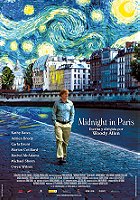 Posted : 13 years, 3 months ago on 11 February 2012 12:02
(A review of Midnight in Paris)
Posted : 13 years, 3 months ago on 11 February 2012 12:02
(A review of Midnight in Paris)We know that Woody Allen does not enjoy great prestige in their home country and it is in Europe where his cinematography has been better appreciated. The highest grossing film of the director in his country, USA, or more nominations for the Oscars is data that summarizes and explains its commercial success and can not be due to chance, but a matter of taste, overall and according to the latitudes different. The European viewer may feel a little disappointed with these last works of Allen in which his peculiar machinery does not seem so well-oiled as before. I guess he will be more difficult to recognize the genius of the New York director even though the action takes place across the Atlantic.
Few years ago, "Vicky Cristina Barcelona" i guess not coincidentally, was another significant success in the U.S.A., coming to be a kind of tribute to the spanish city, Allen in "Midnight in Paris" repeated but with the capital of the Seine. Paradoxically, his last films shooted in Europe are nearest to american tastes than the european... I think the reason is Allen also makes an investment in terms of product presentation, a tour guide working for the American viewer who has not visited the European continent. And so does taking advantage of such ignorance in reference to topics, if not entirely true, at least he channeled the movie did the well-known and trivial and commonplace. A Barcelona city of patio and guitar has replaced a Paris stamp night, very ornate, if not the abstraction of the "Roaring Twenties".
The history of wealthy american families in the french capital is the most bland and superficial, with an incredible climax to close the movie and an important summary of nonsense. As to the fable back to last night, the story improves considerably, with atmospheres "period" and a photograph in warm tones very well built. This, if we tiptoed down the list of personalities from the arts to come out of nowhere the writer protagonist of the film. It worked quite embarrassing how little of the script in this regard. The characters are linial, almost empty, in terms of personality, but will be seen a caricature, unconvincing, hard to be credible.
Another factor that makes heavier the vision of "Midnight in Paris" is the ubiquitous musical accompaniment, with a repetitive string music style of the central line "The Sting". Neither product improves the choice of its extensive showcase of actors, with the notable exception of Marion Cotillard convincing, the only one that gives authenticity to her role. The male protagonist had won a lot in the skin of the director himself, but Allen is no longer in age to young leading man roles.
In short, how sad is to recognize, always in my personal opinion, decline of this really creator who is Allen, with a world that is recognizable and proper, so characteristic. Clearly, the veteran, Allen's hand is seen in some sequences and the film never loses its interest and manages to save but his tone is low, discreet, and, worse, less and less imaginative and more focused concessions, to a large audience like that, no doubt, will not turn away. With his background and justice, recognition should never be lacking in this great filmmaker who is Woody Allen.
Few years ago, "Vicky Cristina Barcelona" i guess not coincidentally, was another significant success in the U.S.A., coming to be a kind of tribute to the spanish city, Allen in "Midnight in Paris" repeated but with the capital of the Seine. Paradoxically, his last films shooted in Europe are nearest to american tastes than the european... I think the reason is Allen also makes an investment in terms of product presentation, a tour guide working for the American viewer who has not visited the European continent. And so does taking advantage of such ignorance in reference to topics, if not entirely true, at least he channeled the movie did the well-known and trivial and commonplace. A Barcelona city of patio and guitar has replaced a Paris stamp night, very ornate, if not the abstraction of the "Roaring Twenties".
The history of wealthy american families in the french capital is the most bland and superficial, with an incredible climax to close the movie and an important summary of nonsense. As to the fable back to last night, the story improves considerably, with atmospheres "period" and a photograph in warm tones very well built. This, if we tiptoed down the list of personalities from the arts to come out of nowhere the writer protagonist of the film. It worked quite embarrassing how little of the script in this regard. The characters are linial, almost empty, in terms of personality, but will be seen a caricature, unconvincing, hard to be credible.
Another factor that makes heavier the vision of "Midnight in Paris" is the ubiquitous musical accompaniment, with a repetitive string music style of the central line "The Sting". Neither product improves the choice of its extensive showcase of actors, with the notable exception of Marion Cotillard convincing, the only one that gives authenticity to her role. The male protagonist had won a lot in the skin of the director himself, but Allen is no longer in age to young leading man roles.
In short, how sad is to recognize, always in my personal opinion, decline of this really creator who is Allen, with a world that is recognizable and proper, so characteristic. Clearly, the veteran, Allen's hand is seen in some sequences and the film never loses its interest and manages to save but his tone is low, discreet, and, worse, less and less imaginative and more focused concessions, to a large audience like that, no doubt, will not turn away. With his background and justice, recognition should never be lacking in this great filmmaker who is Woody Allen.
 0 comments, Reply to this entry
0 comments, Reply to this entry
Confidentially Yours (Vivement dimanche!, 1983)
 Posted : 13 years, 3 months ago on 10 February 2012 09:56
(A review of Confidentially Yours)
Posted : 13 years, 3 months ago on 10 February 2012 09:56
(A review of Confidentially Yours)The movie combines elements of the genres of comedy, crime, mystery, suspense, thriller and amateur detectives. It is a recognizable tribute to black american cinema and, above all, his admired teacher, Hitchcock. The story has the freshness and naturalness of film shot on location, with direct sound and without artifice, like the "Nouvelle Vague" and so dear to Truffaut.
Also notable is the will to play, Chabrol style, and representation of fictions in "Confidentially Yours" which, in my opinion, is the section of the film got less. Findings are very personal, but the French filmmaker lost its vigor after his first narrative film and bearing in mind that this is the last, without losing the entire pulse, we see its decline.
Also notable is the will to play, Chabrol style, and representation of fictions in "Confidentially Yours" which, in my opinion, is the section of the film got less. Findings are very personal, but the French filmmaker lost its vigor after his first narrative film and bearing in mind that this is the last, without losing the entire pulse, we see its decline.
 0 comments, Reply to this entry
0 comments, Reply to this entry
The Sea (El mar, 2000)
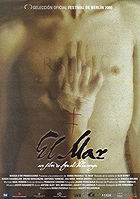 Posted : 13 years, 3 months ago on 9 February 2012 10:53
(A review of The Sea)
Posted : 13 years, 3 months ago on 9 February 2012 10:53
(A review of The Sea)The movie is one of the largest and best examples of passionate film, absorbent and claustrophobic characteristic of majorcan filmmaker Agusti Villaronga.
"The Sea", the sea as a symbol, dive into the subconscious, as a liberator of repressed emotions as a link with the most vivid memories of the past. In this case, the past of a young boy during the Spanish Civil War, which witnessed great acts of violence, along with other playmates, in a village on the island of Mallorca.
From this war prologue, the story reunites the three main characters, as in his youth, in a tuberculosis sanatorium. Here it is evident that Spanish society has changed. A pervasive religion has shaped the character of two of the protagonists to the point of making the only female character in nun nurse. The three will develop a passion seized spiral. Here it is fair to make special mention to the remarkable performance of these young actors, all newcomers, well seconded by the likes of veteran Juli Mira or Simon Andreu.
No lack of homosexual allusions, one more feature, internal drives, sooner or later, eventually burst. Emotional stories anything but complacent, tortuous and full of edges, which also recreates some morbidity in some other sequence. Perhaps the only excess film, an excess of hemoglobin towards the end thereof. But this is the work of this cinema director unjustly little known, with a theme and a very personal language and a style as distinctive as suggestive.
"The Sea", the sea as a symbol, dive into the subconscious, as a liberator of repressed emotions as a link with the most vivid memories of the past. In this case, the past of a young boy during the Spanish Civil War, which witnessed great acts of violence, along with other playmates, in a village on the island of Mallorca.
From this war prologue, the story reunites the three main characters, as in his youth, in a tuberculosis sanatorium. Here it is evident that Spanish society has changed. A pervasive religion has shaped the character of two of the protagonists to the point of making the only female character in nun nurse. The three will develop a passion seized spiral. Here it is fair to make special mention to the remarkable performance of these young actors, all newcomers, well seconded by the likes of veteran Juli Mira or Simon Andreu.
No lack of homosexual allusions, one more feature, internal drives, sooner or later, eventually burst. Emotional stories anything but complacent, tortuous and full of edges, which also recreates some morbidity in some other sequence. Perhaps the only excess film, an excess of hemoglobin towards the end thereof. But this is the work of this cinema director unjustly little known, with a theme and a very personal language and a style as distinctive as suggestive.
 0 comments, Reply to this entry
0 comments, Reply to this entry
Vingt-quatre heures de la vie d'un clown (1946)
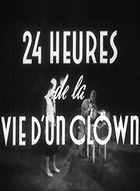 Posted : 13 years, 3 months ago on 8 February 2012 10:21
(A review of 24 hours in the Life of a Clown)
Posted : 13 years, 3 months ago on 8 February 2012 10:21
(A review of 24 hours in the Life of a Clown)It is a short film whose main actors are the famous clowns and Beby Maïss, actors Circus Medrano in Paris and whose title is based on Stefan Zweig's book, "Twenty-four hours in the life of a woman."
Marks the first foray by Jean-Pierre Melville in the movie world and this is his only short film, which contribute to expand the interest in this work. Also the presentation is provided by the director, through a voice-over and some short interspersed images -supposedly dark-on-close- and which recognizes the unique character with hat maker (add, the most famous in film history after Hitchcock).
As its title indicates, is an entire day in the life of Beby, professional clown -and character twilight, as the taste of the director- forgotten today. And it's sad the latter, when he can see pictures of his past reviewing circus in one of the sequences.
Moreover, the movie is sympathetic and, at least, curious, with an important inciting nostalgic remembrance of times past.
Marks the first foray by Jean-Pierre Melville in the movie world and this is his only short film, which contribute to expand the interest in this work. Also the presentation is provided by the director, through a voice-over and some short interspersed images -supposedly dark-on-close- and which recognizes the unique character with hat maker (add, the most famous in film history after Hitchcock).
As its title indicates, is an entire day in the life of Beby, professional clown -and character twilight, as the taste of the director- forgotten today. And it's sad the latter, when he can see pictures of his past reviewing circus in one of the sequences.
Moreover, the movie is sympathetic and, at least, curious, with an important inciting nostalgic remembrance of times past.
 0 comments, Reply to this entry
0 comments, Reply to this entry
Cuadecuc, vampir (1971)
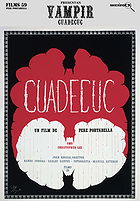 Posted : 13 years, 3 months ago on 7 February 2012 12:06
(A review of Cuadecuc, vampir)
Posted : 13 years, 3 months ago on 7 February 2012 12:06
(A review of Cuadecuc, vampir)Curious experimental film fruit of collaboration between the filmmaker Pere Portabella and poet Joan Brossa. This is an interpretation, a "visual poem", another black and white version, taking the leitmotif the filming of "El conde Drácula" directed by Jesus Franco in 1970.
The movie hardly has anything making-off, although also present in some back room of the shooting sequences. It is an interesting conceptual translation and interpreting psychological, "Cuadecuc, vampir" vampirizes "El conde Drácula", the original film, feeds the heart, blood thereof, along the whole movie: a film is fed, engulfs the other.
"Cuadecuc, vampir" explores formal issues of the vampire genre and its clichés, using techniques close to the German Expressionist film: black and white frames with high contrast and the absence of dialogue. For sound there is only one current music hits with images and voice recordings to play very slow. This gives the film an unsettling atmosphere, higher than the actual visual feedback, will clearly reflect a cutting edge.
Note: "Cuadecuc" is the Catalan word remains to define the unexposed film roll left over in the shootings.
The movie hardly has anything making-off, although also present in some back room of the shooting sequences. It is an interesting conceptual translation and interpreting psychological, "Cuadecuc, vampir" vampirizes "El conde Drácula", the original film, feeds the heart, blood thereof, along the whole movie: a film is fed, engulfs the other.
"Cuadecuc, vampir" explores formal issues of the vampire genre and its clichés, using techniques close to the German Expressionist film: black and white frames with high contrast and the absence of dialogue. For sound there is only one current music hits with images and voice recordings to play very slow. This gives the film an unsettling atmosphere, higher than the actual visual feedback, will clearly reflect a cutting edge.
Note: "Cuadecuc" is the Catalan word remains to define the unexposed film roll left over in the shootings.
 0 comments, Reply to this entry
0 comments, Reply to this entry
Al final de la escapada (2010)
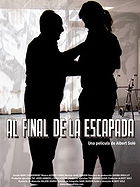 Posted : 13 years, 3 months ago on 6 February 2012 05:23
(A review of Al final de la escapada)
Posted : 13 years, 3 months ago on 6 February 2012 05:23
(A review of Al final de la escapada)Impressive paper on the figure of Miguel Núñez, a man committed to the cause of freedom and civil rights.
Born in Madrid in 1920, he was very young communist militant and political commissar during the Civil War. Later, during the Franco regime, was repeatedly imprisoned. He became one of the heroes of the struggle against Franco for his resistance to the torture and the failure to ever betrayed another partner. With the newfound democracy, was a congressman from the PCE. When the party suffered its first major crisis since he was given the opportunity of a career as first-line bureaucrat, he chose to go to Latin America to undertake other struggles for social rights. In Nicaragua and Bolivia carried out cooperative activities with Evo Morales and Ernesto Cardenal.
The revolutionary attitude also marked the time of his death. When his strength began to fail, went to live in Madrid to Barcelona so that your living will be respected. "Al final de la escapada" is a tribute to a generation of spanish fighters for freedom and a disturbing plea for dignified death.
Born in Madrid in 1920, he was very young communist militant and political commissar during the Civil War. Later, during the Franco regime, was repeatedly imprisoned. He became one of the heroes of the struggle against Franco for his resistance to the torture and the failure to ever betrayed another partner. With the newfound democracy, was a congressman from the PCE. When the party suffered its first major crisis since he was given the opportunity of a career as first-line bureaucrat, he chose to go to Latin America to undertake other struggles for social rights. In Nicaragua and Bolivia carried out cooperative activities with Evo Morales and Ernesto Cardenal.
The revolutionary attitude also marked the time of his death. When his strength began to fail, went to live in Madrid to Barcelona so that your living will be respected. "Al final de la escapada" is a tribute to a generation of spanish fighters for freedom and a disturbing plea for dignified death.
 0 comments, Reply to this entry
0 comments, Reply to this entry
 Login
Login
 Home
Home 187 Lists
187 Lists 208 Reviews
208 Reviews Collections
Collections